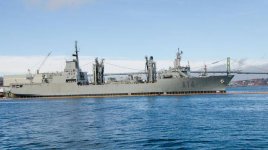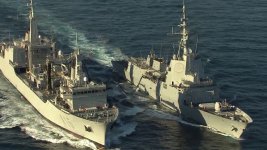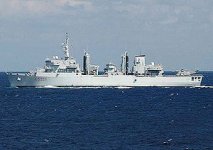A Basic Primer on Naval Shipbuilding
...
by Ian Mack
...
One should not be surprised by the propensity for delays in execution. Canada enjoys living next door to the U.S. and having strong ties with our southern neighbour. Rightly or wrongly, Canadians see the U.S. as the guarantor of Canada’s defence. The corollary is that Canadians view the Department of National Defence as a government entity worthy of less interest than the business of most other departments of government. If one accepts this hypothesis, three corollaries follow. First, Canada still needs to be able to contribute to collective defence to maintain these strong ties – and especially with the Trump administration, where burden sharing by allies who enjoy the U.S. security guarantee remains an objective under the recently released National Defense Strategy. Second, Canadian politicians are unlikely to invest significant capital in finding ways to accelerate defence procurement, which represents political liability due to its expense and significant risk profile for what is essentially overhead of the undervalued defence program. And third, because it is expensive, they want industrial and technical benefits for Canadian companies from every contract, especially noting that these are high-paying jobs with the potential to fuel national prosperity. In implementation, the delivery of shipbuilding projects under NSS can be assessed as hugely expensive, well north of $50 billion. All this is to say, successive governments want to do military procurement, but with a minimum of risk. Continuous attempts to de-risk inherently complex and thus risk-laden initiatives such as shipbuilding consume a lot of effort and time.
Delays are therefore common, putting timely procurement execution in jeopardy across the board. But one should manage their expectations for more timely execution. Unless the world goes into a major war, Canada’s strategic position changes in the world order, the U.S. applies uncommon pressure, or military procurement gets so broken that the politicians cannot take the political heat – delays will continue. There are things that could be done more expediently within the military procurement system but there must be motivation to identify those opportunities and implement the related changes. Other nations empower external czars to do comprehensive end-to-end reviews of programs and projects to identify options employed elsewhere. Then ministers specifically default to accepting proposed recommendations unless there is a compelling reason not to. Without such an approach or similar, attempts to reduce delays are likely to be more akin to tinkering at the edges. Noting these comments relating to schedule for Canadian weapon systems platform acquisitions, it follows that significant changes of procurement strategy mid-course run a very high probability of creating even longer delays than staying the course we are now on.
So What
In the end, this is all about the future of the National Shipbuilding Strategy, an enterprise-wide change initiative of national proportions. It is truly a complex initiative that can be expected to take decades to mature, as was typically required when national naval shipyards went into place in other nations in the previous century. And as stated in the opening paragraphs of this paper, challenges will continue to emerge – challenges that will need continual and candid explanation.
For many years, our government has stated they would pursue a list of solutions to the current ills: enhanced oversight, greater shipbuilding expertise and capacity within the government, improved budgeting based on better cost estimates, and four key measures of outcome performance (timeliness of project execution, delivery of vessels within approved budgets, shipyard productivity and economic benefits).
These are not easily achieved. Internationally, nations are struggling to recruit shipbuilding expertise in sufficient quantities to manage more than one or two major naval procurements continuously over a decade and the knowledgeable people to provide mature governance. International associations engaged in complex project management research have said that in truly complex endeavours, the iron triangle of matched requirements and schedule with cost are nigh on impossible to predict with much confidence until actual deliveries occur in a sorted fashion, so an enhanced record on cost estimation is inherently unlikely.
Then there is the issue of shipyard productivity. Interestingly, when various international benchmarking experts were asked to define when the NSS shipyards could be measured to show strong productivity, they were unanimous in saying that, noting the order book for each shipyard (and especially for Vancouver Shipyard), “not for a very long time”. The shipyards are committed to reach something termed “target state” once they have effectively built a ship and thus demonstrated all the key construction activities. Target state is a set of best practices in shipbuilding, essentially the fundamentals to good productivity. But achieving target state will not necessarily deliver good productivity. Using an analogy, this is similar to being able to master the various skills of driving a car: parallel parking, changing lanes, navigating and the like. But once the driver’s licence is obtained as proof of such competencies, one is not yet necessarily ready to tackle downtown New York traffic in rush hour or the 401 in Toronto during a white-out snow squall. Having the basic skills does not make you a good driver. Under NSS, target state is confirmation that all of the basic skills are present to a reasonable level of competence, but their integration in the face of greater complexity and adversity may not yet be present. Achieving target state does not confirm that the shipyards are meeting some international productivity standard such as “tons of steel per person-year” over multiple ships – and in shipbuilding, such standards themselves are controversial. For all of these measures, the race is on to deliver in every one of them – but schedule is king. In hindsight and noting the priority of defence for Canadians (or rather, the lack of priority), it could be argued that NSPS was the right thing to do in principle but perhaps too ambitious for Canada. But there is a counter argument if the “Build in Canada” shipbuilding policy prevails. As was apparent from the first JSS procurement activity that was terminated, the alternative in this century is likely to be best described as lurching from one crisis to another, shipbuilding project by shipbuilding project and Canadian shipyard by Canadian shipyard.
NSS is not on the rocks but it is in shoal waters. NSS can offer great benefits if Canada can stay the course. There have been and are challenges today. And because the processes shaping procurements are largely set by the client, the ball is in the government’s court. Therefore, the government of Canada is encouraged to (1) commission an independent end-to-end review of NSS with the express intent of expeditiously implementing the resulting recommendations, and (2) implement frequent, regular and honest communications with the public, no matter the issues at hand. These two additional actions alone will go a long ways to keeping NSS off the rocks...
Ian Mack (Rear-Admiral Ret.) was the director-general in the Department of National Defence responsible for a decade (2007-2017) for the conception, shaping and support to the launch and subsequent implementation of the National Shipbuilding Strategy, and for guiding the DND project managers for the Arctic Offshore Patrol Ships, the Joint Support Ships and the Canadian Surface Combatants. Since leaving the government, he has offered his shipbuilding and project management perspectives internationally. Ian is a longstanding Fellow of the International Centre for Complex Project Management.
http://www.cgai.ca/a_basic_primer_on_naval_shipbuilding








